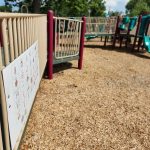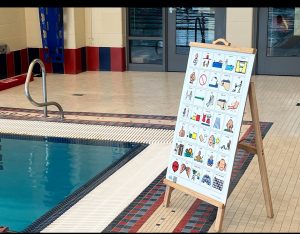
The gifts are opened, the boxes are in the recycling bin and it’s time to return to a more structured schedule. Returning to the daily routine creates a sense of calm for most individuals, especially those with special needs. Being aware of how the day will go gives everyone a moment to relax and anticipate the next event without surprises. Below are some tips to help return to this predictable routine:
Visual Supports:
Visual schedules are a powerful tool for individuals with special needs. Create a visual schedule using pictures, symbols, or written words to represent each activity throughout the day. The visual schedule provides a clear and concrete representation of the routine, helping individuals understand and anticipate what comes next.
Gradual Transitions:
Sudden changes can be overwhelming for individuals with special needs. Gradually reintroduce the routine by making small adjustments to the schedule. This could involve shifting meal times, bedtime routines, or other daily activities in a way that is subtle and allows for a smoother transition.
Use Timers and Alarms:
Timers and alarms can serve as cues for transitioning between activities. Set alarms on a timer or a smartphone to signal the start or end of an activity. This visual and auditory cue can help individuals with special needs prepare for changes and transition more smoothly.
Consistency is Key:
Consistency is crucial when establishing or re-establishing a routine for individuals with special needs. Strive to maintain consistency in the timing and order of activities. Predictability helps reduce anxiety and provides a sense of security.
Incorporate Preferred Activities:
Integrate preferred activities into the schedule. This can serve as motivation and make the routine more enjoyable. Whether it’s a favorite game or sensory-friendly activity, incorporating these elements can positively reinforce adherence to the schedule.
Provide Clear Instructions:
Clearly communicate expectations and instructions. Use simple language and visual cues to help individuals understand what is expected of them during each activity. Clarity in communication reduces confusion and enhances cooperation.
Create a Safe and Calm Environment:
Ensure that the environment is conducive to a calm and focused mindset. Minimize distractions, create designated spaces for specific activities, and consider sensory needs. A comfortable and organized environment promotes a sense of security and stability.
Seek Input and Collaboration:
Involve the individual in the process of creating or modifying the schedule. Consider their preferences and interests when planning activities. Collaboration fosters a sense of ownership and can make the schedule more personally meaningful.
Celebrate Achievements:
Acknowledge and celebrate small achievements along the way. Positive reinforcement, whether through verbal praise, a reward system, or preferred activities, can motivate individuals and make following the schedule a positive experience.
Work with your Speech Therapist:
Collaborate with your speech therapist. Seek their input and guidance in creating the schedule to address specific needs and goals related to communication and behavior.
Remember that each individual is unique, so it’s important to create a schedule to their specific needs and preferences. Be patient, observe for signs of stress or discomfort, and adjust the schedule as needed to ensure a positive and supportive transition back to the ‘normal’ routine.










